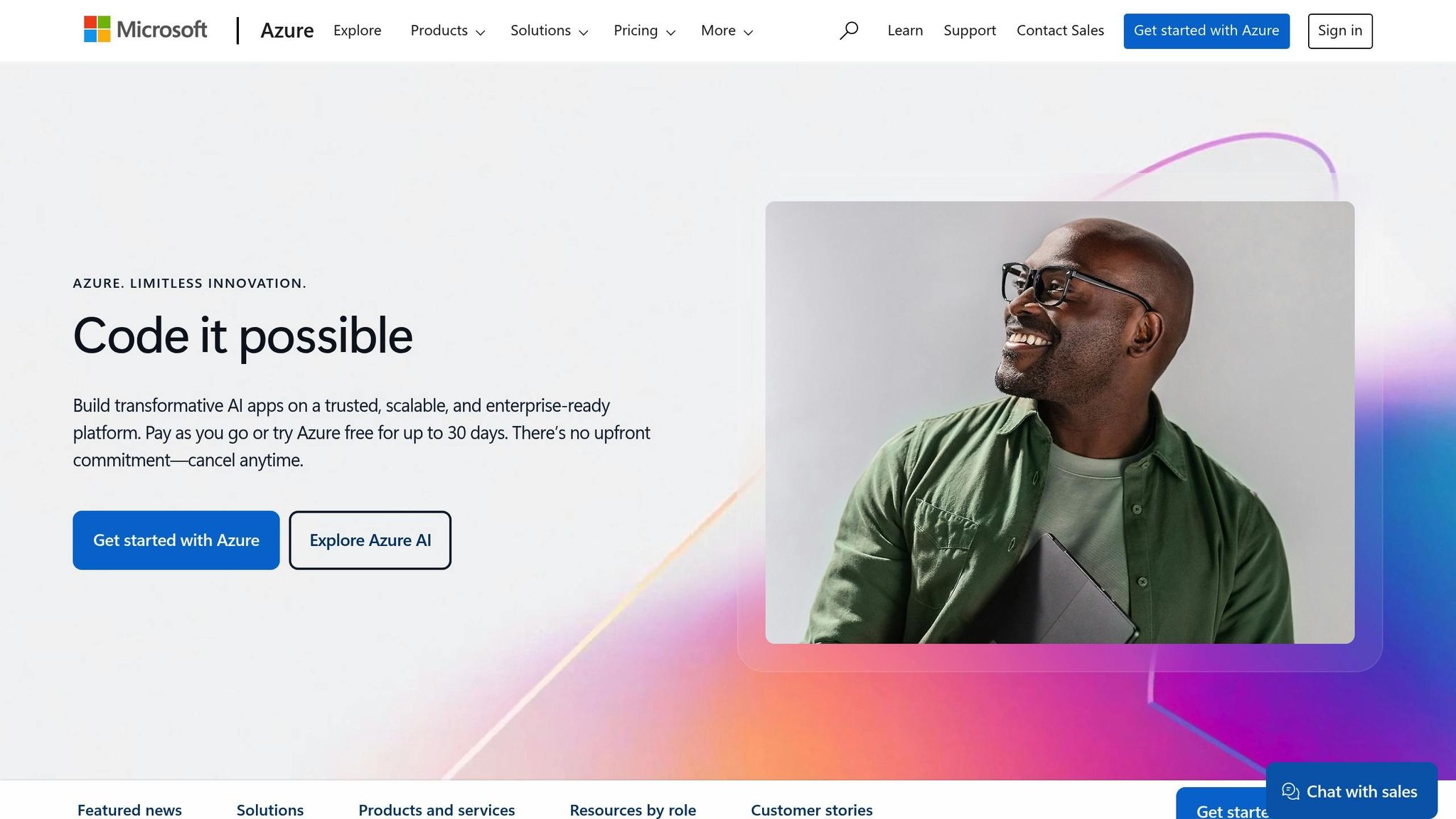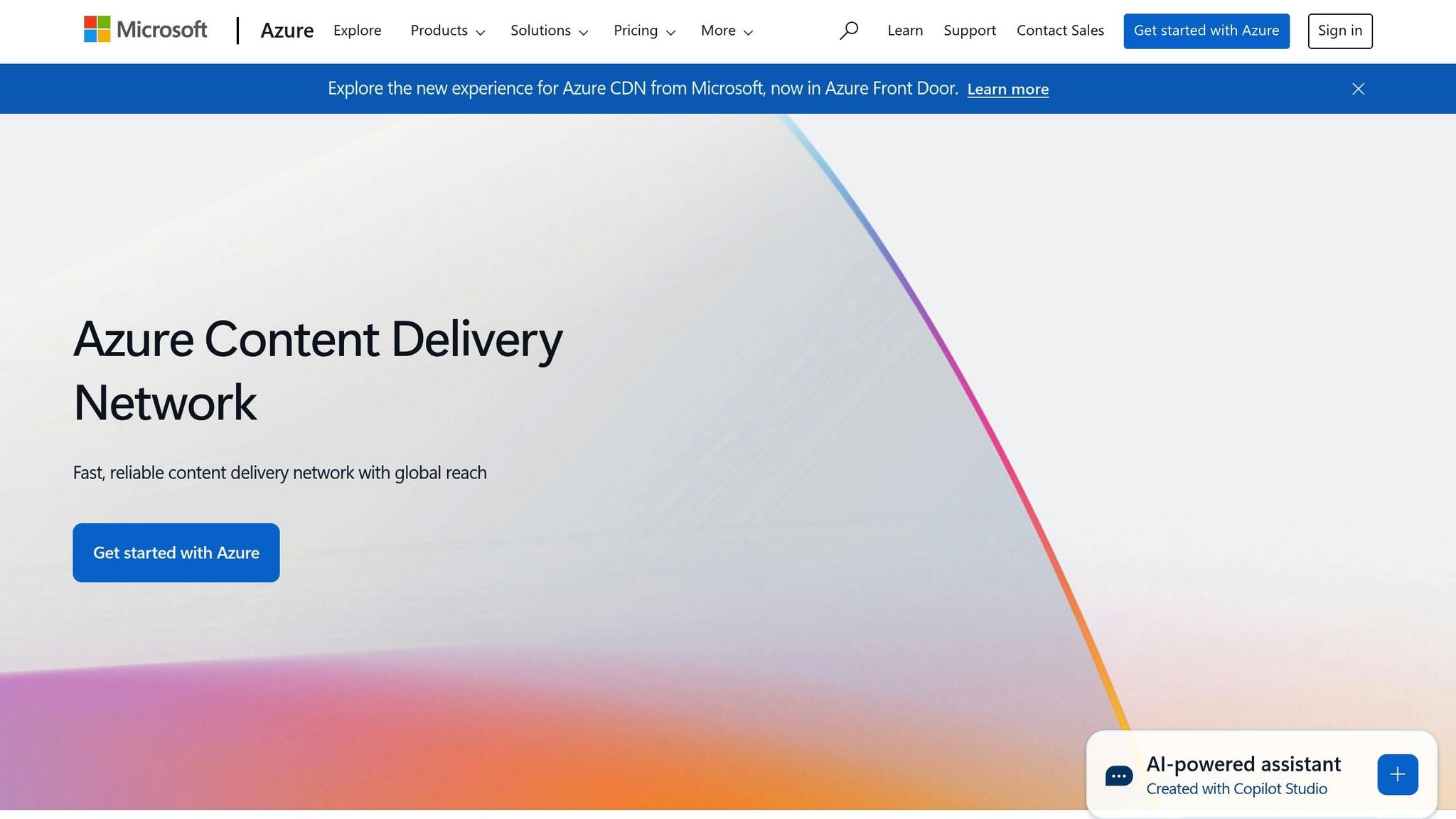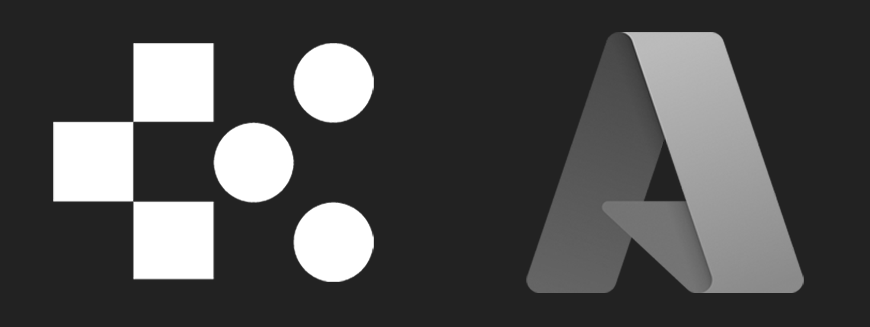Azure Data Transfer Costs: 7 Ways to Reduce
Learn how to effectively reduce Azure data transfer costs with seven actionable strategies that enhance performance and efficiency.

Did you know that most Azure data transfer costs for UK businesses come from outbound traffic (egress)? This can significantly inflate your Azure bills, especially for companies serving users across regions. But the good news is, there are actionable ways to cut these costs without compromising performance.
Here’s a quick summary of 7 proven strategies to reduce Azure data transfer costs:
- Place Data Close to Users: Store data in regions near your audience to lower transfer distances and costs.
- Use Azure CDN and Caching: Cache frequently accessed content at edge locations to reduce egress charges.
- Compress and Reduce Data Size: Shrink data with compression and deduplication before transferring.
- Track Data Movement Patterns: Analyse traffic flows to eliminate inefficiencies and unnecessary transfers.
- Improve App and Network Design: Co-locate services, use lightweight data formats, and optimise caching.
- Set Up Smart Traffic Routing: Use tools like Azure Traffic Manager to route data through cost-effective paths.
- Create Data Transfer Rules: Set policies to limit cross-region transfers and schedule bulk transfers during off-peak hours.
Quick Comparison
| Method | Cost Impact | Setup Complexity |
|---|---|---|
| Place Data Close to Users | High | Medium |
| Use Azure CDN and Caching | High | Medium |
| Reduce Data Size Before Transfer | Medium | Low |
| Track Data Movement Patterns | Medium | High |
| Improve App and Network Design | High | High |
| Set Up Smart Traffic Routing | Medium | Medium |
| Create Data Transfer Rules | Medium | Low |
These methods not only save costs but also improve performance by reducing latency and optimising data flows. Start by combining strategies that are easy to implement, like compression and caching, with long-term solutions like improving app design. Use Azure’s tools like Cost Management and Traffic Manager to monitor and refine your setup over time.
Tip: For detailed guidance, check out Azure’s Cost Management tools and resources to track your savings and optimise further.
Managing, reporting, and reducing your costs in Azure | Azure ...

Azure Data Transfer Costs Explained
For UK businesses managing cloud expenses, it's crucial to grasp Azure's data transfer costs. Here's the key: outbound data transfer - data leaving Azure data centres - comes with charges, while inbound data transfer is free. Azure applies a tiered pricing system, meaning rates depend on the amount of data transferred.
Transfers between different regions are chargeable, but moving data within the same region is typically free. Using the Azure Cost Management dashboard, you can track data egress patterns and pinpoint areas to cut costs. One practical tip? Keep your data and applications in the same region to reduce outbound transfer fees.
For more insights, visit Azure Optimization Tips, Costs & Best Practices. To get the most accurate rates, use the Azure pricing calculator or contact Azure support directly.
1. Place Data Close to Users
Storing data near your users can help reduce Azure transfer costs. By keeping data in regions closer to your audience, you minimise the distance it needs to travel. This not only lowers transfer expenses but also improves performance.
Regional Storage Approach
Choose Azure regions that align with where your users are located. For instance, if most of your users are based in Manchester and London, using UK South or UK West regions would be a smart choice. This keeps data transfer paths short and costs manageable.
Handling a Distributed User Base
If your users are spread across different regions, start by identifying the region where the majority of them are located. This ensures that most data interactions happen locally, reducing delays and costs.
Performance Advantages
Storing data closer to users doesn’t just save money - it also provides:
- Lower latency
- Quicker response times
- A smoother experience for users
2. Use Azure CDN and Caching

Azure CDN is an effective tool for cutting data transfer costs and improving performance. By caching content closer to users, it reduces the distance data needs to travel and minimises egress charges. This approach works well alongside other data transfer strategies.
How Azure CDN Saves Money
Azure CDN stores data at edge locations. Instead of pulling content from the main server, users access it from the closest CDN node. This significantly reduces data transfer costs.
Effective Caching Practices
Prioritise caching for content that gets frequent requests, such as:
- Static assets like images, style sheets, and scripts
- Media files
- Specific API responses
Adjust caching rules based on content type. For example, static content can be stored longer, while dynamic content may require more regular updates.
Compression and File Optimisation
Azure CDN includes tools to shrink file sizes and improve transfer efficiency, such as:
- Automatic image adjustments
- Real-time file compression
- Advanced HTTP compression for text-based files
Cost and Performance Gains
A well-tuned CDN setup not only lowers server demand but also reduces transfer expenses. Additionally, it improves application performance by cutting latency, speeding up load times, and decreasing bandwidth usage.
For more tips on optimising Azure, check out Azure Optimisation Tips, Costs & Best Practices.
3. Reduce Data Size Before Transfer
Cutting down the size of your data before transferring it can save you money on Azure egress charges and also speed up the transfer process. Two effective ways to achieve this are data compression and deduplication.
Compression Techniques That Work
You can compress data at multiple levels depending on its type:
- Application-level compression: Compress API responses and other dynamic content.
- File-level compression: Ideal for documents, images, and media files.
- Database-level compression: Useful for transferring structured data.
Why Deduplication Matters
Deduplication removes repeated data, making it especially helpful in:
- Backup and recovery tasks.
- Moving large datasets.
- Regular data synchronisation efforts.
Best Practices for Implementation
To make the most of compression and deduplication, follow these steps:
- Analyse Your Data: Look for redundancies in your data patterns and monitor compression ratios to fine-tune your approach.
- Pick the Right Method: Use lossless compression for critical files to preserve quality, while lossy compression works for data where slight quality loss is acceptable. For large files, block-level deduplication is a smart choice.
- Automate Processes: Set up workflows for compression, establish deduplication rules, and schedule regular checks to keep everything running smoothly.
Keep Performance in Check
Compression can put extra strain on your CPU. Overdoing it might cancel out your cost savings with higher processing time. Keep an eye on performance metrics to find the right balance between data reduction and efficiency.
For more tips on managing costs, check out Azure Optimisation Tips, Costs & Best Practices.
Up next, learn how tracking data movement patterns can help you optimise transfer costs even further.
4. Track Data Movement Patterns
Tracking how data moves can help you spot inefficiencies and cut down on costs.
Tools like Azure Monitor, Azure Cost Management, and Network Watcher are key for keeping an eye on data transfers, costs, and traffic patterns.
Establishing Your Baseline
Start by documenting your current data flows:
- Map out how data moves between services, regions, and endpoints.
- Track transfer volumes during both peak and off-peak times.
- Calculate the costs associated with these transfers.
Analysing Data Movement
Pay attention to data volume, transfer frequency, peak usage times, and cross-region traffic. This can help you uncover expensive patterns.
Finding Opportunities to Improve
Use your analysis to make improvements, such as:
- Eliminating unnecessary transfers.
- Scheduling large transfers for off-peak hours.
- Placing frequently connected services in the same region.
- Consolidating small transfers into larger, less frequent batches.
These adjustments can help you manage costs more effectively over time.
Staying on Top of Changes
Set up automated alerts to flag unusual activity, such as unexpected spikes in transfer volume or cross-region traffic. This ensures you can address issues quickly.
For more tips on managing Azure costs, check out Azure Optimisation Tips, Costs & Best Practices.
5. Improve App and Network Design
Streamline your app architecture to reduce Azure data transfer costs. By designing applications to handle data more efficiently, you can lower expenses without compromising service quality.
Minimising Data Movement
To keep Azure costs under control, aim to reduce unnecessary data transfers in your architecture:
- Co-locate interdependent services: Place related services together to cut down on inter-service data transfers.
- Organise data based on usage: Partition data according to how it's accessed.
- Group microservices: Keep microservices that frequently communicate within the same region or cluster.
Choosing Lightweight Data Formats
Reduce data transfer sizes by opting for compact data formats. For instance, use formats like Protocol Buffers or Avro instead of more verbose options like JSON. These choices can significantly lower data volumes.
Smart Caching Techniques
Caching can help minimise redundant data transfers. Here are some effective approaches:
- Multi-layer caching: Use caching at both the browser and application levels.
- Define cache rules: Ensure data stays updated while avoiding repeated transfers.
- Distributed caching: Share cached data across application instances to boost efficiency.
Regular Architecture Assessments
Evaluate your app and network design regularly to spot areas for improvement:
- Look for opportunities to merge services.
- Identify inefficient data access patterns.
- Assess where caching could further reduce data transfers.
For more detailed tips on fine-tuning your Azure setup, visit Azure Optimization Tips, Costs & Best Practices.
These strategies can lay the groundwork for additional cost-saving measures in your Azure environment.
6. Set Up Smart Traffic Routing
Using smart traffic routing in Azure can help lower egress charges and streamline network flows. This method ensures strong performance while keeping data transfer costs under control.
Traffic Management
Azure Traffic Manager directs user requests based on their geographic location. By doing this, it sends data through the most cost-effective routes, cutting down on transfer expenses.
Load Balancing
Azure Load Balancer evenly distributes traffic across resources, helping to prevent bottlenecks that could increase transfer costs. This approach works well alongside other cost-saving measures.
For more tips on reducing Azure data transfer costs, check out Azure Optimization Tips, Costs & Best Practices.
7. Create Data Transfer Rules
Managing data transfer rules in Azure can help you control costs and optimise data movement. By setting clear policies, you can minimise egress charges while keeping data flow efficient.
Policy-Based Controls
Set up rules to decide when and how data transfers happen. Key strategies include:
- Limiting transfers to specific regions to avoid unexpected cross-region charges.
- Scheduling bulk data transfers during off-peak hours to take advantage of lower network costs.
Smarter Data Aggregation
Reduce the volume and frequency of data transfers by applying aggregation rules. Here are some effective methods:
- Batch Processing: Group smaller transfers into larger, consolidated packages.
- Compression: Enable automatic compression for certain file types before transferring.
- Delta Sync: Transfer only the data that has changed, instead of the entire dataset.
Regional Transfer Management
Use geographic-based policies to keep costs in check. For instance:
- Route data through Azure regions with lower transfer costs.
- Focus on intra-region transfers, as they are generally cheaper than cross-region movements.
These measures complement earlier strategies by automating cost-saving processes and ensuring data is placed closer to users while keeping file sizes manageable.
Cost-Saving Methods Compared
Each of the methods outlined earlier contributes to lowering Azure data transfer costs. Here's a quick comparison of the seven methods, focusing on their cost impact and how complex they are to set up.
| Method | Cost Impact | Setup Complexity |
|---|---|---|
| Place Data Close to Users | High | Medium |
| Use Azure CDN and Caching | High | Medium |
| Reduce Data Size Before Transfer | Medium | Low |
| Track Data Movement Patterns | Medium | High |
| Improve App and Network Design | High | High |
| Set Up Smart Traffic Routing | Medium | Medium |
| Create Data Transfer Rules | Medium | Low |
This table helps you decide which methods to focus on, balancing effectiveness with how easy they are to implement.
Key Considerations
- Methods with a high cost impact (like placing data closer to users or using Azure CDN) often require more initial investment but can lead to substantial savings over time.
- Changes to architecture need careful planning to avoid disrupting your services.
- Combining different methods that complement each other can help you achieve better cost efficiency overall.
Azure Cost Tools
Azure Cost Management and Billing provides UK SMBs with tools to keep a close eye on Azure data transfer expenses and take control of their spending.
Cost Analysis Dashboard
The Cost Analysis dashboard in the Azure Portal gives a detailed view of your data transfer costs. With it, you can:
- Break down costs by service, region, or transfer type
- Spot trends in spending
- Detect unexpected spikes in usage
- Export data as CSV files for deeper analysis
Budget Alerts
Budget alerts ensure you stay on top of your spending. They notify you when costs are nearing or exceeding set thresholds, so you can act quickly to manage your budget.
Cost Allocation
Cost allocation tools help pinpoint which teams or projects are driving data transfer costs. By using resource tagging and billing reports, you can:
- Assign costs to specific departments or initiatives
- Track spending across different regions
- Analyse data transfer patterns (ingress and egress) to find ways to improve efficiency
These insights are a foundation for actionable advice provided by Azure Advisor.
Advisor Recommendations
Azure Advisor builds on your cost data to offer tailored suggestions, such as:
- Pinpointing underused resources that may be causing unnecessary traffic
- Suggesting the best regions for data placement
- Highlighting options for caching to reduce transfer demands
- Offering network design strategies to cut down on data movement
For more detailed tips on managing Azure costs, visit Azure Optimisation Tips, Costs & Best Practices.
Summary
Managing Azure data transfer costs effectively requires a smart and well-planned approach.
Placing data closer to users and using Azure CDN services can help cut down on egress charges. This reduces the amount of data leaving Azure's network, which can lead to noticeable cost savings.
Keeping an eye on data size and tracking how it's moved are also key. Compression techniques can shrink data sizes, while monitoring transfer patterns can highlight areas for improvement. Azure Cost Management tools make it easier to track these adjustments and measure their impact, helping businesses design more efficient networks.
Improving network design and routing traffic wisely can prevent unnecessary data transfers, saving money in the process. These technical tweaks can make a big difference.
On top of technical changes, setting clear operational rules is equally important. Clear guidelines for data movement, combined with Azure's built-in cost management tools, help businesses stay in control of their expenses.
Focus on methods that deliver quick results and rely on Azure's native tools for a thorough approach to cost management. Regularly reviewing Azure Cost Management data ensures these savings are maintained over time.
FAQs
How can I find the nearest Azure region to my users to minimise data transfer costs?
To identify the closest Azure region to your user base and reduce data transfer costs, you can use Azure's Region Finder Tool or similar resources provided by Microsoft. These tools help you determine which Azure region offers the lowest latency and best performance for your audience.
Additionally, consider monitoring your application's traffic patterns and user locations through Azure Monitor or other analytics tools. This information can guide you in selecting the most cost-effective region for your services while ensuring optimal performance for your users.
How can I use Azure CDN and caching to reduce egress data transfer costs?
To minimise egress data transfer costs in Azure, leveraging Azure CDN and caching is highly effective. Azure CDN helps by delivering content closer to your users through a distributed network of servers, which reduces the amount of data transferred from the original source. This not only improves performance but also cuts down on egress charges.
Additionally, implementing caching ensures frequently accessed data is stored temporarily in a location closer to your users. By reducing the need to repeatedly fetch this data from Azure's main servers, you can significantly lower data transfer costs. Focus on caching static content like images, scripts, and stylesheets for the best results.
Optimising your CDN configuration and regularly reviewing usage patterns can further enhance cost savings.
What tools does Azure provide to monitor and optimise data transfer costs effectively?
Azure offers several tools to help you monitor and optimise your data transfer costs. Azure Monitor allows you to track network usage and identify areas where data transfer can be reduced, while Cost Management + Billing provides detailed insights into your spending patterns. These tools can help you pinpoint high egress traffic and optimise data flow to minimise unnecessary expenses.
To further reduce costs, consider strategies like leveraging Azure CDN for caching, which decreases the amount of data transferred from your origin servers. Additionally, review your architecture to ensure data is being routed efficiently, and make use of tools like Azure Advisor for personalised recommendations on cost optimisation.




